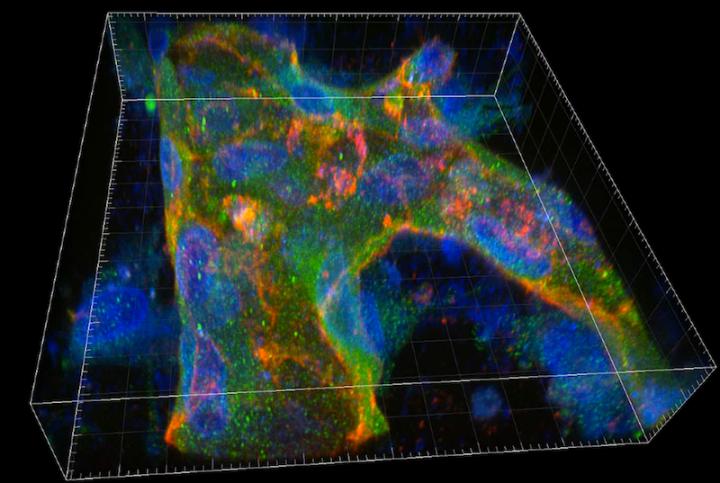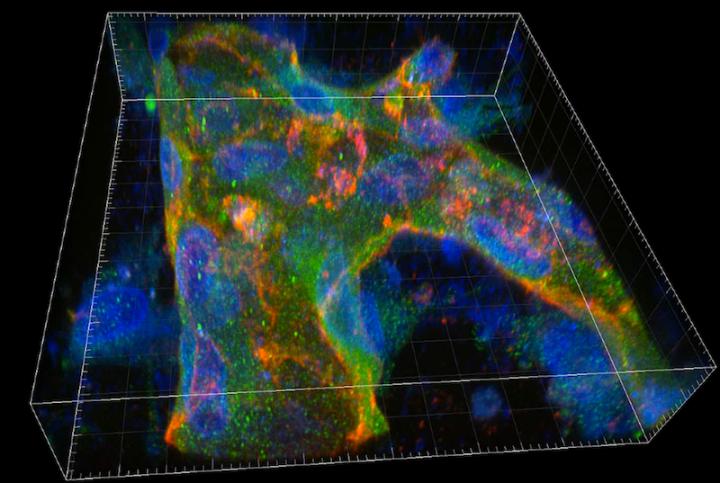
Credit: Bischoff lab/Boston Children's Hospital
Three-dimensional modeling and CRISPR-Cas9 gene editing technology are giving scientists a new view into Sturge-Weber syndrome, a rare congenital disorder that causes small blood vessels, called capillaries, to be malformed. These capillary malformations can cause port wine birthmarks on the face and neck, and in some cases, abnormal vasculature in the brain that can spark seizures.
Last year, a Boston Children's Hospital research team — led by Joyce Bischoff, PhD, of the Vascular Biology Program — discovered that the genetic mutation responsible for Sturge-Weber syndrome dwells in endothelial cells lining the affected capillaries in the brain. The team had previously found the same mutation present in the endothelial cells of skin capillaries of patients' port wine birthmarks.
Together, their studies suggest that mutated endothelial cells could be causing surrounding cells to behave abnormally.
To explore this emerging hypothesis, Bischoff's team is seeking lifelike ways of mimicking these hallmark capillary malformations in the laboratory. Their goal is to use microfluidic chip technology to grow 3D, physiologically-relevant vascular networks containing the syndrome's genetic mutation, called GNAQ R183Q.
With fellowship support from the Sturge-Weber Foundation, Colette Bichsel, PhD, a Boston Children's research fellow in Bischoff's lab, is using her expertise in microvasculature modeling to build the 3D models of capillary malformations inside microfluidic chips made of silicone.
Bischoff's team is also looking for better ways to create the mutant cells that seed the 3D models.
"One strategy we are investigating is the use of the CRISPR-Cas9 gene editing system to replicate the GNAQ R183Q mutation in human cell lines," says Bichsel.
So far, these studies have revealed some surprising results about the way endothelial cells develop with the GNAQ R183Q mutation.
"We have much more work to do, but it seems as though mutated cells grow slower than normal ones," says Bichsel. "Perhaps this helps explain why we see disorganized vasculature in the capillary malformations of people with Sturge-Weber syndrome."
Although their data are too preliminary to draw any conclusions, Bischoff's team is hopeful that an improved platform for modeling capillary malformations will unlock new insights into the syndrome's underlying mechanisms.
"We're thrilled to continue our lab's partnership with the Sturge-Weber Foundation on this research," says Bischoff. "Our ultimate hope is that this research lays the groundwork for new therapies that can prevent these capillary malformations from developing to a point where they are detrimental to patients' quality of life."
###
Media Contact
Keri Stedman
[email protected]
617-919-3110
@BostonChildrens
http://www.childrenshospital.org/newsroom
Original Source
https://vector.childrenshospital.org/2017/11/crispr-3d-sturge-weber-syndrome/





